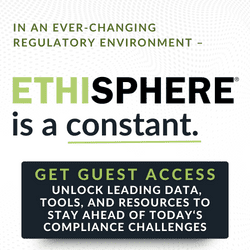There is no better time to prepare for an economic downturn than when business is good. With the severity of the 2007–2008 financial crisis still fresh on the minds of many directors and executives, how should companies prepare for an economic downturn in the cool of the day rather than reacting in crisis mode in the heat of the moment?
At this time, most established business plans do not contemplate an economic downturn. However, some observers are forecasting a recession in the United States within the next couple of years – say, by 2020.[1] Everyone is watching interest rates, trade, government spending, geopolitical tensions and other “tea leaves” carefully. The truth is, no one knows what the future has in store. But memories of the severity of the last downturn and its consequences for most organizations have not faded. That’s why, for most companies and their management teams and boards, a contingency plan makes good business sense, as it positions them to act decisively when recessionary storm clouds begin to loom on the horizon.
Contingency plans are certainly not new, as organizations have been developing them for a long time. Plans are documented with specific action steps that are triggered if certain harmful events occur. Such events might include natural disasters (floods, earthquakes, etc.), cybersecurity breaches, terrorist activities, fire, fraud, theft or embezzlement. Notably, these perils may never occur, but the plan stands ready nonetheless if they do. Plans are also developed to address market opportunities, should they arise.
But our focus here is on an economic recession that causes revenues to decline below a predefined threshold. It is virtually irrefutable that a recession will occur at some point as our historically reliable economic cycle unfolds. Therein lies the wisdom of creating a contingency plan to (a) mitigate the financial impact of a severe economic downturn on earnings and share price, and (b) position the company to gain market share during the recovery. Below, we discuss how such a plan is developed to accomplish these two objectives and the board’s role in the process.
Key Considerations
The inevitability of economic downturns makes them one of the more significant risks that capital-intensive, highly leveraged organizations face. The stark reality is that a severe recession affects everyone – no company is exempt when it rears its ugly head. As with most contingencies, the timing of a significant slowdown of business activity is difficult to predict.
There are many stories of companies that were ill-prepared for an economic downturn and, as a result, either were severely damaged or went bankrupt. In fact, the examples are so numerous, it is an all-too-common storyline – companies that had excessive leverage, were reliant on a distressed customer base, were exposed to excessive commodity risk – the list goes on. Suffice to say that the threat is real to seasoned executives and boards. Therefore, creating a contingency plan is a practical risk management strategy for any CEO and his or her board. A credible plan also protects executives and directors against lawsuits for failure to exercise due care. In fact, in the United States, the largest, most complex banking organizations supervised by the Federal Reserve are required to file resolution plans annually to set forth the company’s strategy for rapid and orderly resolution in the event of material financial distress or failure.
In Protiviti’s business, we help clients prepare for and manage all forms of risk, including the risk that dramatic changes in the economy or one or more industries could have a devastating impact on firm revenues. Our view is the best time to prepare for a downturn is when a company is operating in a healthy, stable economic climate – not while the company is in distress. Severe economic downturns are often accompanied by business failures on the part of multiple companies in an industry. Our point of view is that firms should position themselves to both weather the storm and benefit from a market recovery through a lean infrastructure and improved market share.
Creating a plan in a thoughtful and deliberate manner helps ensure the plan is supported by detailed analyses, adequately considers sequential actions and/or seasonality, maximizes the options available to decision-makers, and addresses considerations relating to contractual obligations, employee/union issues and regulatory compliance. In a well-prepared contingency plan, action steps are sequenced, prioritized and grouped by corporate function and operating units so that ownership and authorities are clear. Each action step is accompanied by targeted cost savings in the current and subsequent projection year(s).
From our perspective, the key elements of a plan for most companies are:
- Headcount and hiring changes – Human capital is commonly one of a company’s largest and most controllable expenses. Management must carefully evaluate the cost-benefit of its investment in human capital in a distressed environment. This is a time for shepherding the talent that is most critical to retain. Focused retention, objectively determined and phased reductions in the workforce, and changes to hiring practices are often important components of the contingency plan.
- Compensation, benefits and incentive plans adjustments – Temporary revisions to compensation, benefits and incentive plans may be necessary to stabilize the entity’s financial condition. Vetting the economic realities of a declining top line and the need for adjustments to the reward system with key personnel before the distress begins is a productive step that creates a broader support base for the plan when it is implemented. That’s why it makes sense to be as up-front as possible to assure people that they are being kept informed.
- Asset divestitures – Capital-intensive and diverse companies may have underperforming assets or divisions that can be sold to stave off losses, reduce debt, and generate liquidity and working capital. Alternatively, there may be high-performing, non-strategic assets that can be sold to raise capital. In developing the contingency plan, management should categorize the company’s assets – underperforming versus high-performing, strategic versus non-strategic – so that a plan can be developed for each asset category. The plan should give consideration to the timing and the immediate and long-term financial impact of asset sales and the need for such sales as extreme economic scenarios unfold. Timing can be a critical factor, as it makes little sense to sell assets once the market is depressed. It may also be possible to enter into sale-leaseback transactions for certain facilities to raise capital while retaining use of needed assets.
- Selling, general and administrative (SG&A) cutbacks – SG&A offers many opportunities to reduce costs. In the context of a contingency plan, the objective is to adjust the cost structure to support stabilization and preservation of the enterprise.
- Consider other options – A company can take other steps before an economic downturn to protect against the impact. For example, management can hedge raw material prices and lock in sales prices, and thereby stabilize margins – at least for a period of time. Also, if it will reduce costs, management can consider outsourcing non-core activities that are not strategic to the business, e.g., certain HR-support, accounting, manufacturing and transportation activities. As for marketing and branding, viewing market-facing expenditures as a pure cost can lead to deep cuts that can undermine the strategy. It may make more sense to focus marketing on sustaining brand awareness during the recession. For example, companies could consider focusing more on cost-effective marketing, editorials and public relations activities to support the brand versus larger advertising and sponsorship expenditures. Finally, the contingency plan should address the impact of interconnectivity and continuity, e.g., what steps would the company take if a major supplier were to go under as a result of the downturn? Stress testing different scenarios that might result from a downturn may help management focus on those areas requiring a more robust plan.
- Hierarchy for cost-savings initiatives – The plan should outline a comprehensive menu of cost-saving initiatives that could be implemented in the event of a downturn. Each initiative should be prioritized to create a scalable plan. Depending on the severity of the downturn, some or all of the initiatives can be implemented. Initiatives might include reductions in headcount, marketing spend, expansion initiatives, consulting fees, bonus and benefit programs, community support, and charitable giving. They also might include imposing stricter travel guidelines and even suspending or discontinuing underperforming operations.
- Communications plan – As noted earlier, in times of economic uncertainty, people like to be informed. To that end, timely and open communication is vital to preserving morale in tough times so that employees know where they stand, which will help them and the organization get through the crisis. Straight talk and transparency are very effective because, from an employee perspective, no news does not necessarily mean good news. It is indeed a stressful time for everyone due to what is almost sure to be a soft job market.
An effective plan also should determine the key metrics to be managed against management’s specified targets, e.g., net operating income percentage, gross margin percentage, acceptable variance from budget, earnings per share, minimum cash balance and maximum debt level. With the targets identified, a financial forecast over an appropriate period of time should be prepared to establish a baseline. Considering different scenarios – revenue declines of, say, 10 percent and 20 percent, for example – the costs and expected benefits from the aforementioned elements should be considered to ascertain the specific actions management should take.
Once the plan is completed, it should be reviewed with and approved by the board. The company then resumes its growth strategy with full knowledge that the contingency plan is ready when the time comes – and it will come. Going forward, management should monitor the external and internal economic indicators appropriate to the company and periodically review the analysis with the board. In addition, the plan should be reviewed periodically – say, annually – to ensure it remains current.
Triggering the implementation of the plan is a matter of choosing the right time, particularly for asset sales. The triggering decision may be a challenging one to make. But even if the optimal timing is missed, having a plan in place is better than having no plan at all. Preparedness leads to decisiveness under fire. Once the plan is initiated, a project management office (PMO) should be designated to drive its implementation. The PMO monitors achievement of the assigned initiatives and provides status reports to senior executives and the board.
A vetted, predetermined contingency plan saves precious time when the day comes to implement it. When appropriate members of the management team are involved in the plan’s development and ratification, there is a broader base of support for its execution. That support base leads to more efficient implementation, making the PMO’s job easier and offering greater assurance to the CEO and the board of minimum execution risk.
In summary, given the inevitability of recessions, it would be prudent for boards of directors and executive teams to insist on developing a response plan under sunny skies rather than when the recessionary storm arrives. Such action on the part of the board would demonstrate due care and sound business judgment in discharging its oversight responsibilities in addressing a credible threat. Entering a distressed environment without a thoughtful, comprehensive plan can lead to hasty decisions, inefficiencies and costly delays.
Questions for Executive Management and Boards of Directors
Following are some suggested questions that executives and directors may consider, based on the risks inherent in the entity’s operations:
- Is there a proactive contingency plan in the event of an economic downturn? Does management periodically update the plan? Have directors reviewed and approved the plan?
- Does management monitor the appropriate economic indicators and their implications for the execution of the growth strategy and brief the board on the insights gained?
[1] “75% of the Ultra-Rich Forecast a US Recession in the Next Two Years, Survey Finds,” Natasha Turak, CNBC, April 19, 2018, available at www.cnbc.com/2018/04/19/75-percent-of-the-ultra-rich-forecast-a-us-recession-in-the-next-two-years-survey-finds.html.



 Jim DeLoach, a founding
Jim DeLoach, a founding 






